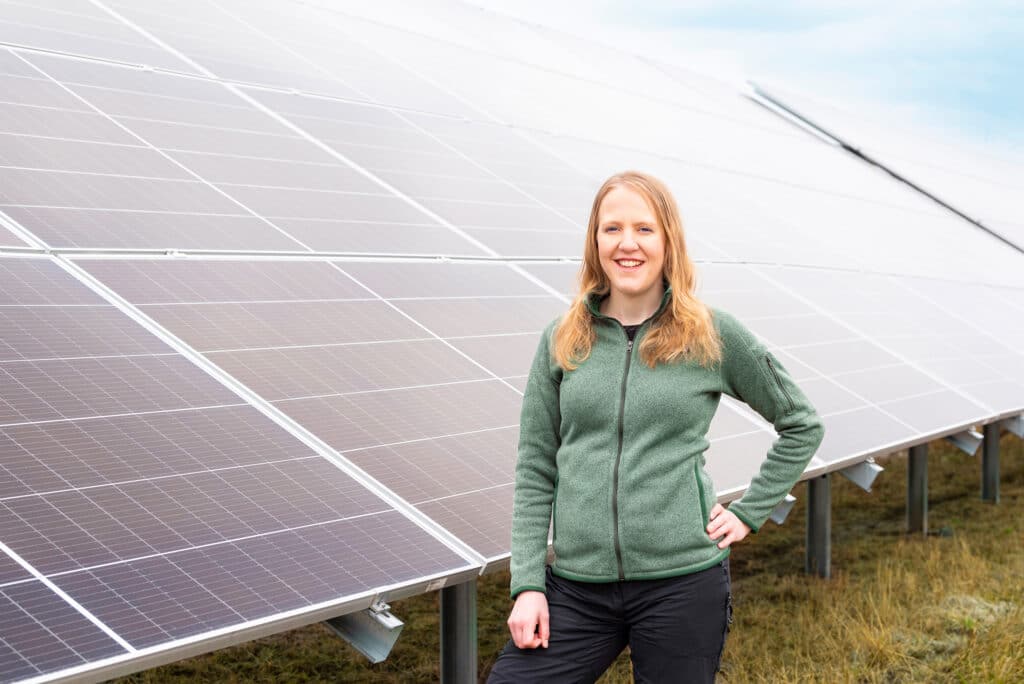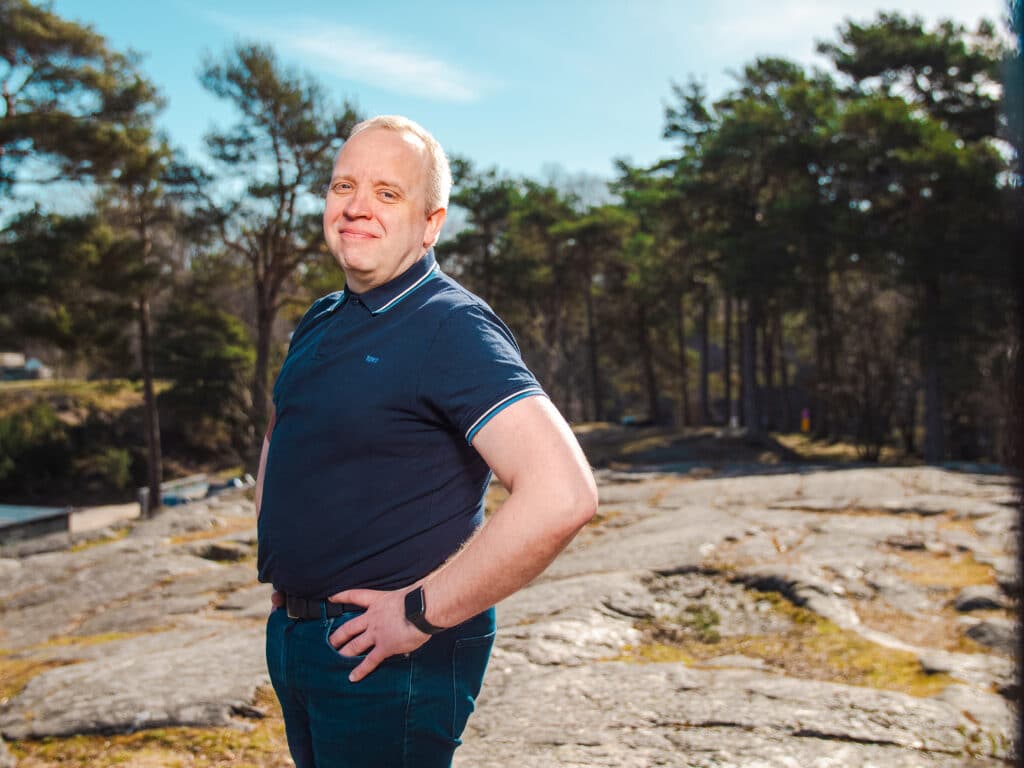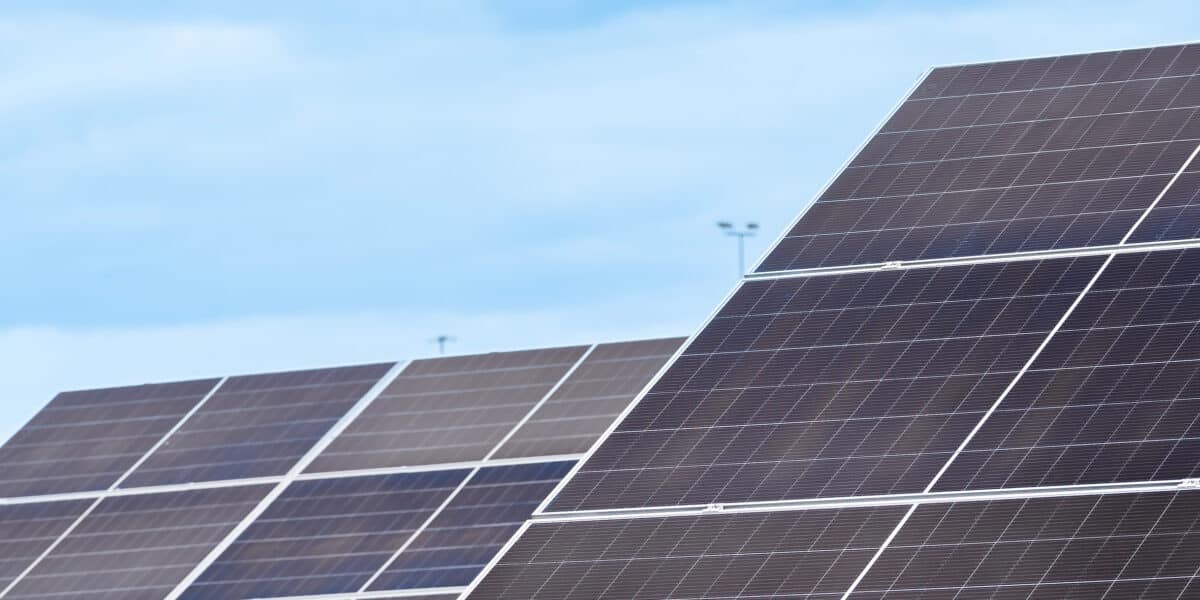Ilmatar has taken big steps in its solar power projects. The company has over a decade of experience in wind power construction, but it now wants to add solar power to its production mix.
“The demand for emission-free domestic electricity has increased. Solar panels have come down in price, and solar energy production has also become profitable in Finland,” explains Elina Kärkimaa, Head of Solar Engineering.
She says that solar and wind power support each other: when there is no wind, the sun often shines, and vice versa. Solar and wind power projects also share some similarities. There are also differences, as solar farm projects usually have a lighter administrative burden due to their lower environmental impacts. For the same reason, solar farms usually do not encounter strong resistance.
Breathing new life into a former airport
Ilmatar’s first project is a five-megawatt solar power plant in Joroinen. The vicinity of an airfield provided the required area without any other land use pressure.
According to Kärkimaa, the people of Joroinen have been positive towards the solar farm project, and cooperation with stakeholders has gone well. A further key factor is cooperation with the transmission system operator.
Ilmatar owns its power plant projects from start to finish, throughout the entire life cycle. The company also operates in Sweden, so it has accumulated knowledge from various practices.

“In Finland, renewable energy projects are developed in cooperation with network operators. Dialogue is extremely important. The project risks can be reduced when the costs are predictable and we know whether new capacity can be connected to the network or whether other projects will be built in the area.”
Kärkimaa also sees solar power as a significant opportunity for Eastern Finland, where there are more restrictions on wind power construction due to airspace surveillance.
Ilmatar has tested technical solutions and gained practical experience in Joroinen. The company’s next projects will be much larger, including solar farms rated at over 100 megawatts.
Larger-scale solar power production is a new development for Finland, which is relatively late in adopting industrial-scale solar power by international comparison due to its northern location.
”Solar power is relatively simple, but it carries its own kinds of risks due to the high number of components – one cannot afford systematic failures. Sustainable exploitation of solar energy requires high quality and good planning. We can benefit from the world-wide solar PV experience here in Finland.”
Wind and sun in hybrid power farms
Helen is also adding solar power to its production mix. The company already has a 1.5 megawatt peak solar farm in Nurmijärvi, with a 10 megawatt peak solar farm in Lohja and a 206 megawatt peak solar farm in Kalanti still to come.

“Wind and solar power are important aspects of Helen’s profitable green transition,” says Jari Kottonen, Senior Manager.
He also says that wind and solar power complement each other well. The Juurakko hybrid power plant in Kalajoki is a concrete example: wind and solar power are produced using a shared electricity network infrastructure. Helen owns the wind farm in the area, while Solarigo Systems Oy is responsible for the solar power plant.
“Solar and wind power production go so well together that a hybrid plant can be made using a single connection. A hybrid regulator prevents the plant from exceeding the maximum power agreed upon with Fingrid.”
Helen’s wind farm in Lakiakangas, Ostrobothnia, is complemented by a battery energy storage facility. This combined plant also uses a single grid connection.
“Connectivity is a key criterion when considering solar farm locations.”
That is why requesting a grid connectivity statement is one of the first steps in such a project. Kottonen says that in practice, they ask Fingrid’s contact person for an opinion before the official round of statements.






